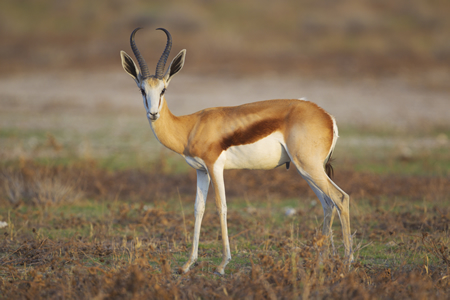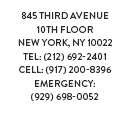
Yathin S Krishnappa - Own work
The Springbok (Afrikaans: spring = jump; bok = antelope, deer, or goat) (Antidorcas marsupialis) is a small brown and white gazelle that stands about 75 cm high. The males can weigh up to 50 kg and the females up to 37 kg. The Latin name marsupialis derives from a pocket-like skin flap which extends along the middle of the back on to the tail. The springbok can lift this flap, which makes the white hairs underneath stand up in a conspicuous 'fan'.
Typical of this species is the pronk (jumping display), which led to its common name. Both sexes have horns but those of the ram are thicker and rougher. This species has adapted to the dry, barren areas and open grass plains and is thus found especially in the Free State, North West province and in the Karoo up to the west coast of South Africa.
They are herd animals and move in small herds during winter, but often crowd together in bigger herds in summer. They eat both grass and leaves and can go without drinking-water, because they get enough moisture from the succulent leaves. Where drinking-water is available they will use it.
The springbok was a national symbol of South Africa under white minority rule (including a significant period prior to the establishment of Apartheid). It was adopted as a nickname or mascot by a number of South African sports teams, most famously by the national rugby team. It appeared on the emblems of the South African Air Force, the logo of South African Airways (for which it remains their radio callsign) and the Coat of Arms of South Africa. It also featured as the logo of 'South Africa's Own Car', the Ranger, in the early 1970s.
The Springbok remains the national animal of South Africa.
After the demise of apartheid, the ANC government decreed that South African sporting teams were to be known as the Proteas, however, the rugby team still maintain the name Springboks after the intervention of then-president Nelson Mandela, who did so as a gesture of goodwill to the mainly white (and largely Afrikaner) rugby supporters.
Sources:
- Antelope Specialist Group (1996). Antidorcas marsupialis.
- 2006 IUCN Red List of Threatened Species. IUCN 2006.
- Brownell, FG, Nasionale en Provinsiale Simbole. 1993. Johannesburg: Chris van Rensburg Publications.
- GCIS
- Wikipedia
Revision date: Thursday, 10 September, 2020



